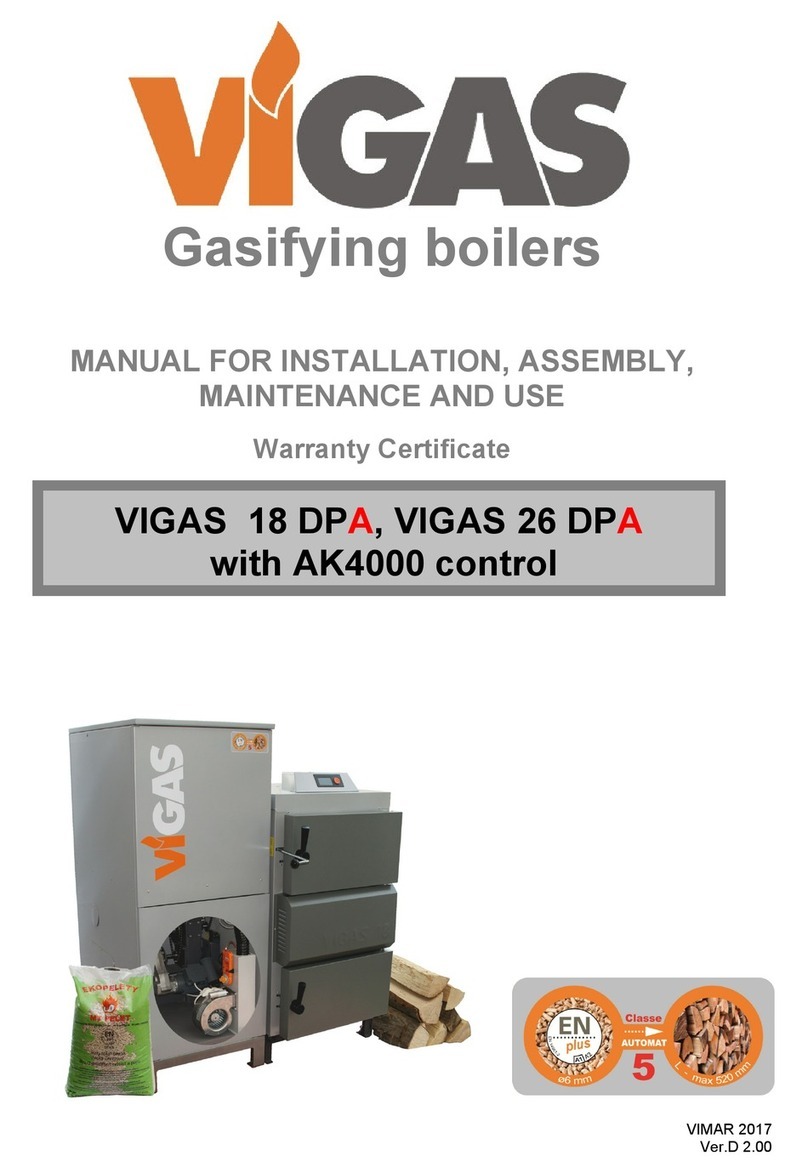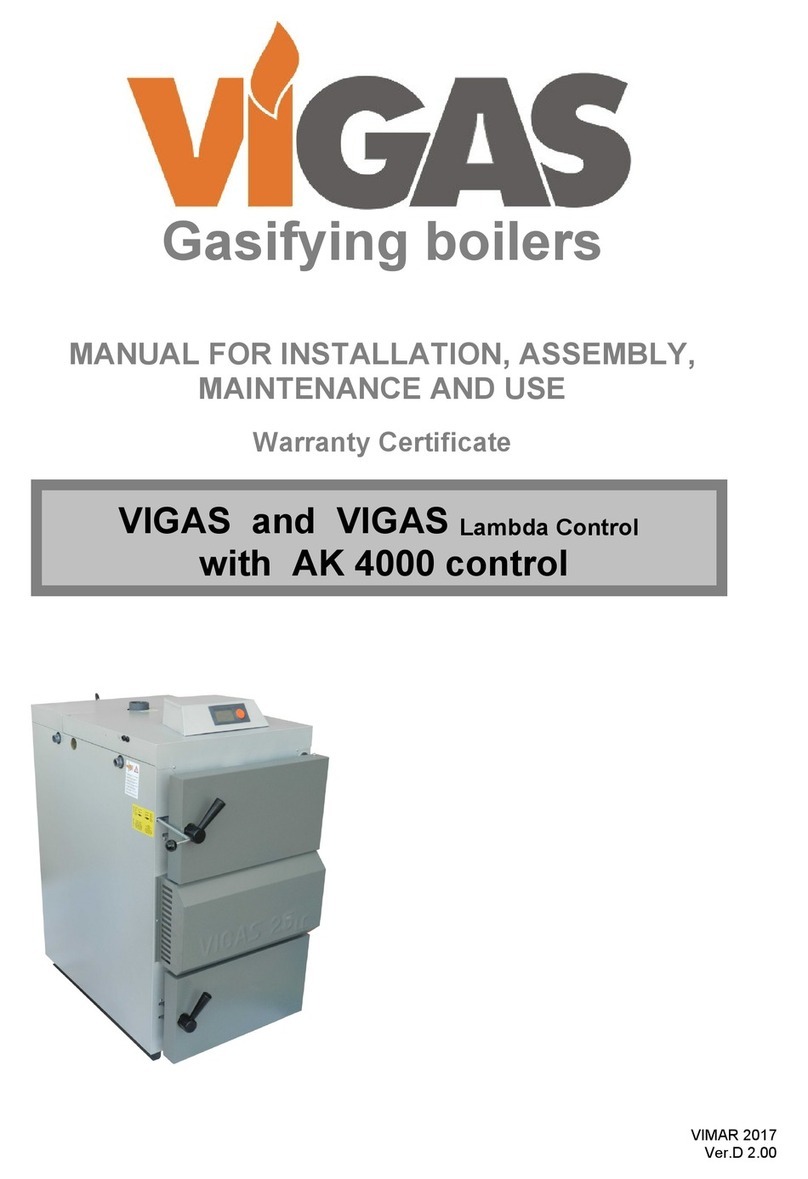
Gasifying boilers VIGAS
VIGAS 12 DPA, 18 DPA, 26 DPA
1. TECHNICAL DESC IPTION
Combined warm water boiler VIGAS DPA offers two different systems of fuel combustion. Wood fuel
combustion provides effective way applied with all Vigas boilers. Pellet fuel heating is provided by classic
burning process on fire grate, made of heat resistant steel, where pellets are delivered by screw feeder.
oiler VIGAS 18 DPA and VIGAS 26 DPA is designed to burn pellets with diameter of 6 mm and lenght up
to 40mm, as well as dry wood materials from sawdust to wood logs of 52 (VIGAS 12 DPA 37 cm) cm long,
with max. diameter 20 cm. Sawdust, woodchips and cuttings are recommended to burn together with wood
logs.
oilers are welded from 4 and 6 mm steel sheets. Inner boiler sheets, which are in contact with boiler
gases are 6 mm thick, others are made of 4 mm steel. The heat exchanger is welded from 57 x 4,5 mm
steel pipes. External casing of is made of 0,8 mm steel sheets. Heat insulation of the boiler is formed by
20-50 mm mineral wool. The combustion gas is discharged through steel flue gas into the chimney.The
pellet container is designed from 1,5 mm steel sheet and its volume is 225L for 12DPA, 250 L for 18DPA,
340 L for 26DPA.The integral components of the boiler include: front gear unit, electric ignition unit,
security tourniquet, air distributor with servo and fan, chimney temperature sensor, ultrasound sensor to
detect level of pellets. Internal space consists of combustion chamber, where fuel is dried and combusted.
Produced wood gas is carried through nozzle into combustion chamber, where it burns with support od
secondary air.
Pellets are led directly to combustion chamber by accurate dosing from container during combustion with
assistance or regulated air supply. Furthermore, the flue gases are led to double-row heat exchanger,
where intensively cooling down untill reaching the flue gas. Unburned ashes and waste is seated in the
combustion chamber, which is advised to be clean approximately once a week. oiler offers simple
maintenance due to AK4000 control, located on the top of the boiler.
Control AK4000 offers and permits following actions:
to control heating temperature reached by changing of fan speed using by PID regulator
to control and manage operation of pellet feeeding device
to read water boiler temperature
to read volume of pellets in the container
to read temperature of flue gases
to read motor temperature of pellet feeding device
to connect and control the discharge fan
to connect and control circulation pump
to connect and control room thermostat
to connect extended regulation (Expander AK 4000) via H US
to connect modul AK 4000M for data back-up and possible evaluation via PC
option for graphic view of hydraulic schemas with connection per requirements
SAFETY FEATU ES
oiler is supplied with ST safety, which disconnects the boiler fan to avoid boiler overheating above
100 °C and it is equipped with safety cooling exchanger according to EN 303/5: 2021. Manufacturer
recommends to purchase Honeywell TS131 3/4“ safety valve - to be assembled to the safety cooling
exchanger. The boiler is equipped with a safety cell feeder (tourniquett) driven by chain transmission to
avoid pellet re-ignition inside container. In case of power failure or device error, there is always security air
gap between the container and pellet combustion chamber which prevents ignition of the pellets in the
container. To avoid engine gear damage by possible feeding screw blockage or tourniquet blockage, the
boiler is equipped with a safety thermometer that detects the temperature of the engine and if temperature
is 80 °C, engine will shut down.
1.1 WASTE DISPOSAL
Packaging material (wood, polystyrene, stretchfoil). Wood can be burned in the boiler, polystyrene and
stretchfoil deliver to the separate waste collection. After the end of the lifetime of the boiler, the boilerbody
and cover panels must be disposed as metal waste. Insulating material muss be delivered to the separate
waste collection. Used packaging materials fulfill the conditions for placing the packaging materials on the
market.






























